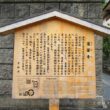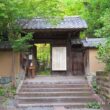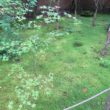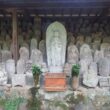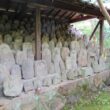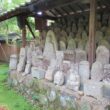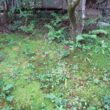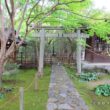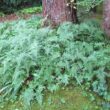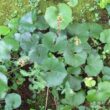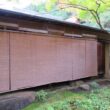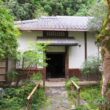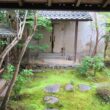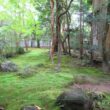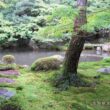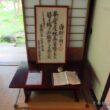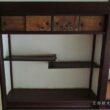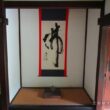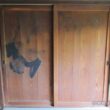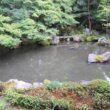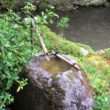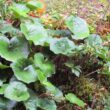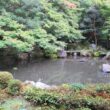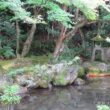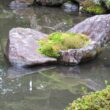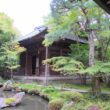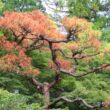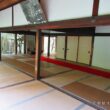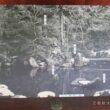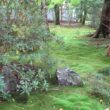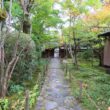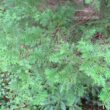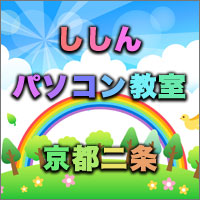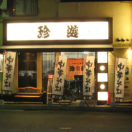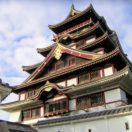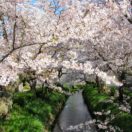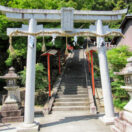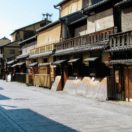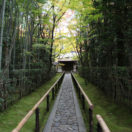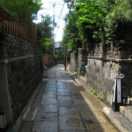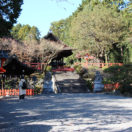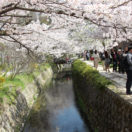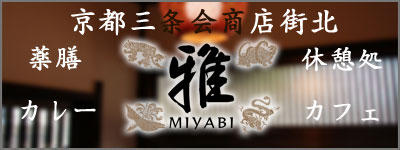adsense4
About Rengeji Temple
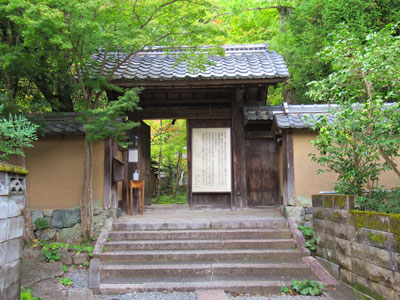
Rengeji Temple is a Tendai Sect temple named Kimeizai. It is said that during the Kanbun period (1661-1673), Shigenao Imaeda, a vassal of the Kaga Maeda family, was ordained and lived in a house here, where he spent his later years while interacting with Jozan Ishikawa, Tanyu Kano, and others. It is said that Shigenao’s grandson Chikayoshi moved the temple from Shichijo Shiokoji to this location and made it a branch temple of Enryakuji Jizoubo.
The gate is located on a side alley with parking for six cars and on the left side of the gate is a group of stone Buddhas, said to number about 300. These stone Buddhas were excavated during the construction of the Kawaramachi Line of the Kyoto Municipal Electric Railway.
Entering the main hall, you will see a magnificent Gohonzon, and behind it is a shoin where you can appreciate the garden.
At the back of the garden, there isa spring that leads to a pond at the center of the garden. The pond is shaped like a character for “water” and is called a “mizuji-gata” (water character shape).
In the right front of the pond, there is a stone called Funaishi.
Turtle Island and Crane Stone are located in the left front of the pond. On Turtle Island, built of large boulders, a stone lantern called a “tojin-hat marugata” is placed and connected to the shore by a stone bridge. The crane is represented by a standing crane stone that is placed along the side of the stone.
This garden with turtle island and crane stone is said to have been created by Jozan Ishikawa, and is one of the best gardens of the Edo period, and is also famous for its autumn foliage.
From the Shoin, put on slippers and walk forward to the right to the main hall.
It was regrettable that photography was prohibited inside the main hall.
Inside the main hall, a statue of Shakymuni Buddha is enshrined in a mother-of-pearl inlay kitchen. On the left side of the main image is a statue of Amitabha Nyorai with the seal of elegant descent (raigo-in). The golden glow of the Amitabha Nyorai and its halo in the darkness has a mysterious luminosity that seems to draw the viewer in. The author gazed at the Buddha image for a while.
Anyway, the garden was magnificent, and I thought it was a perfect temple to spend a quiet moment in the suburbs while admiring the garden.
adsense2
Rengeji Temple photos
▼Press any thumbnail, and you can see the photo gallery.
▼Tap any thumbnail, and you can see the photo gallery.
Photographer: Taisuke Yamada
Detail
| Location | 〒606-0065 1, Kamitakano-Hachiman-cho, Sakyo-ku, Kyoto-shi, Kyoto |
|---|---|
| Telephone | TEL:075-781-3494 |
| Entrance fee | 400yen |
| Access | Take Kyoto Bus and get off at “Kanbashi” bus stop. 7 minutes on foot from Miyakehachiman Station on the Eizan Electric Railway |
| Parking lot | 6 standard cars (free of charge) |
| Site URL | https://ja.wikipedia.org/wiki/蓮華寺_(京都市左京区) |
Recommended places to visit in conjunction with
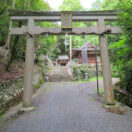
Sudo Shrine
The Sudo Shrine was built during the Jokan period (859-877) to comfort the soul of Prince Hayara (Emperor Sodo), who was arrested as the ringleader of the assassination of Fujiwara no Tanetsugu, imprisoned at Otokuni-ji Temple, and on his way to Awaji, died fasting after claiming his innocence.
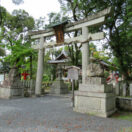
Miyake Hachimangu Shrine
Miyake Hachimangu Shrine is located in Kamitakano Miyake-cho, Sakyo-ku, Kyoto City. The shrine is also known as "Mushi Hachiman" (meaning "Insect Hachiman") because it is believed to be effective in exterminating insects as a god of insect control.

